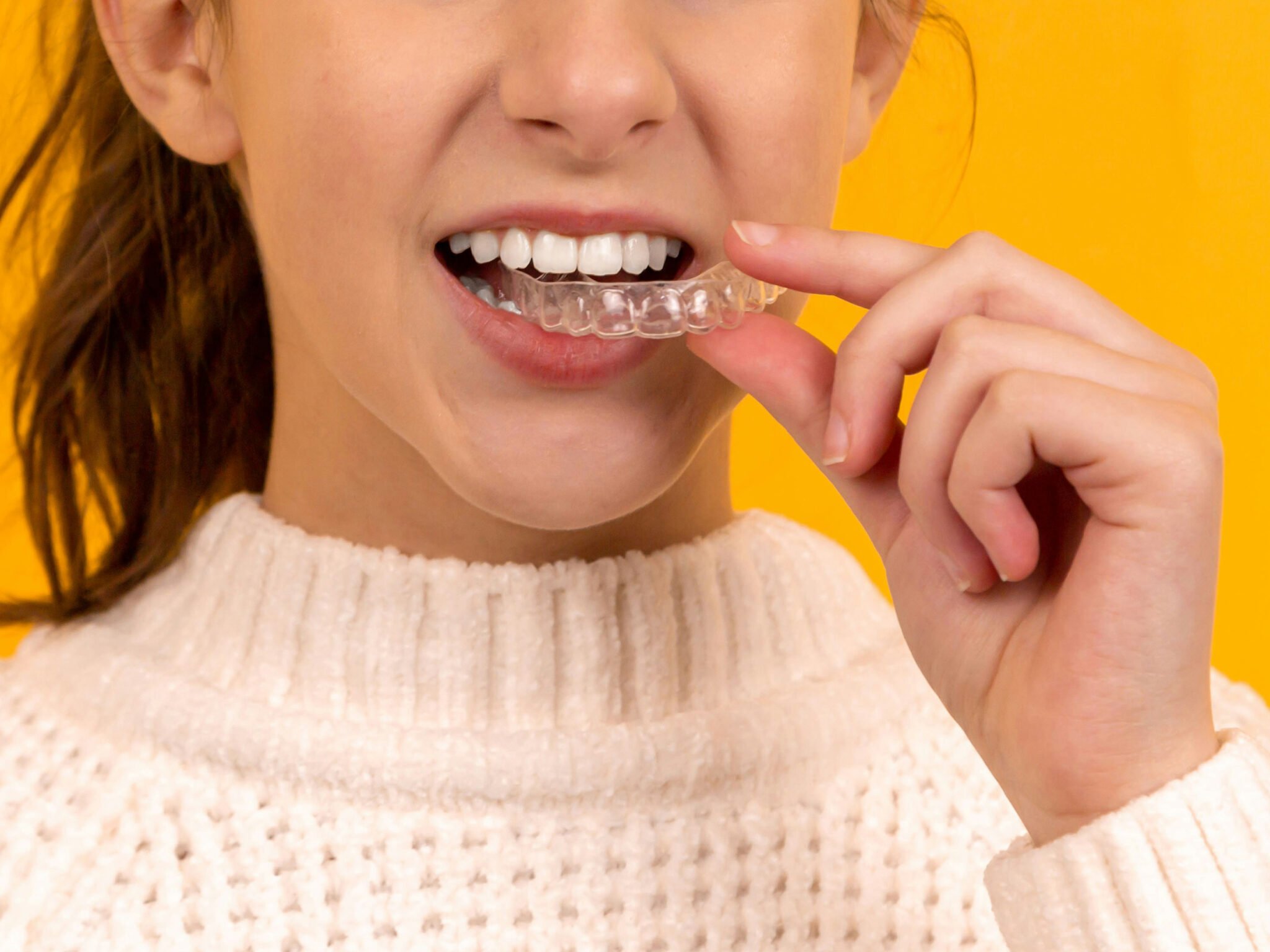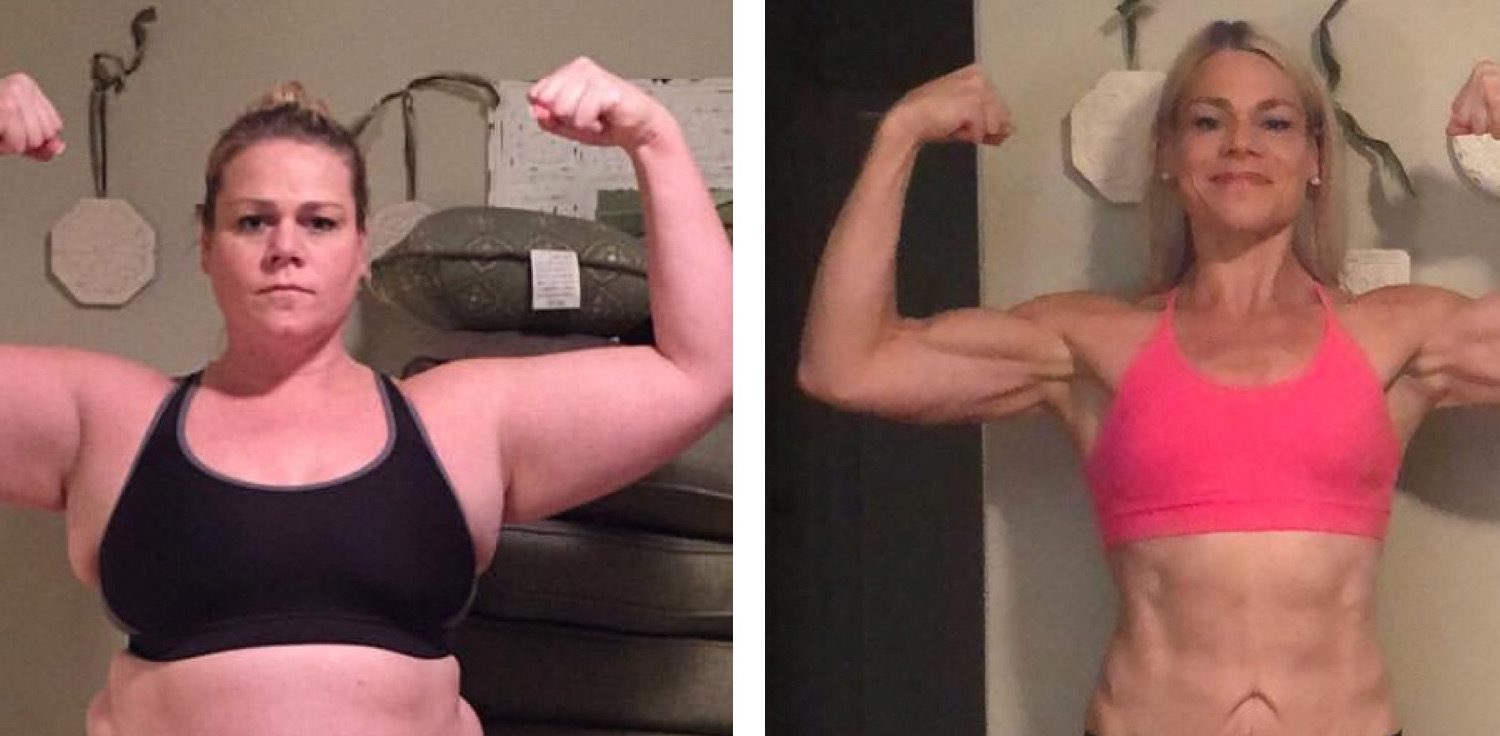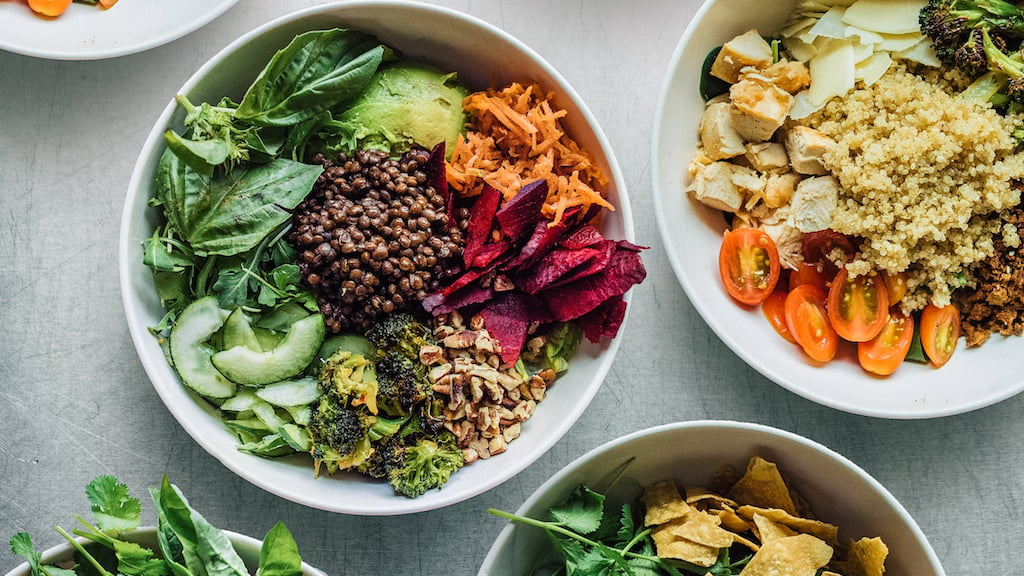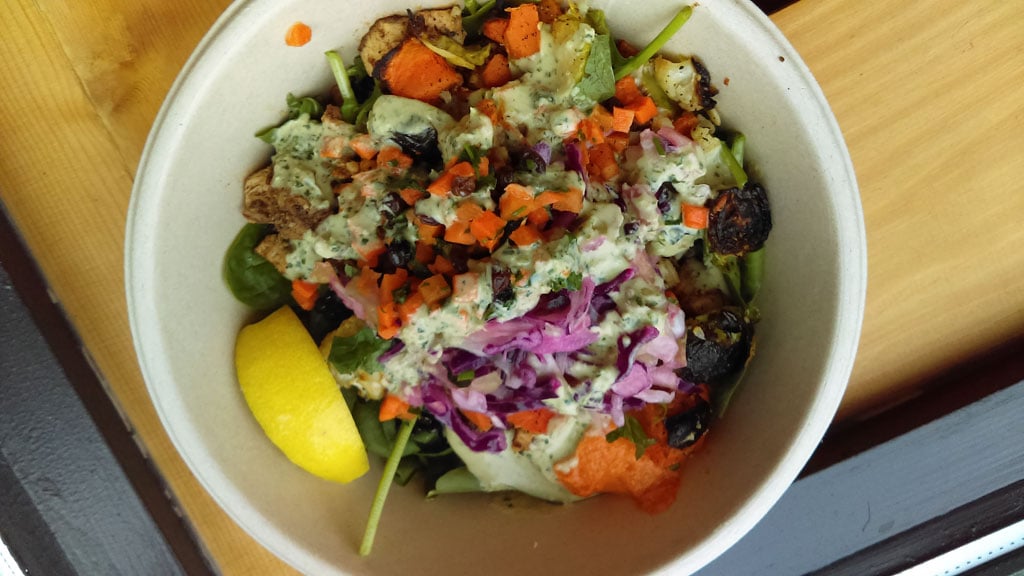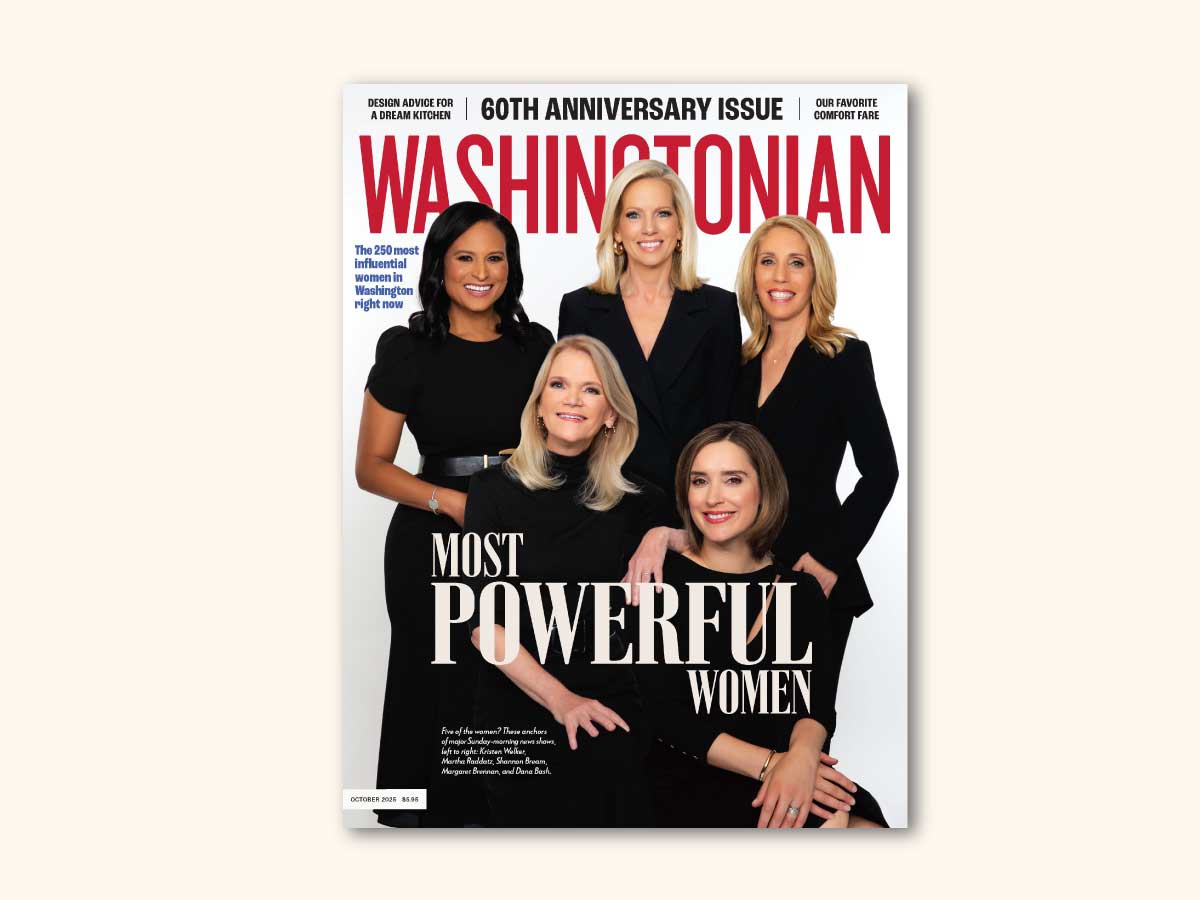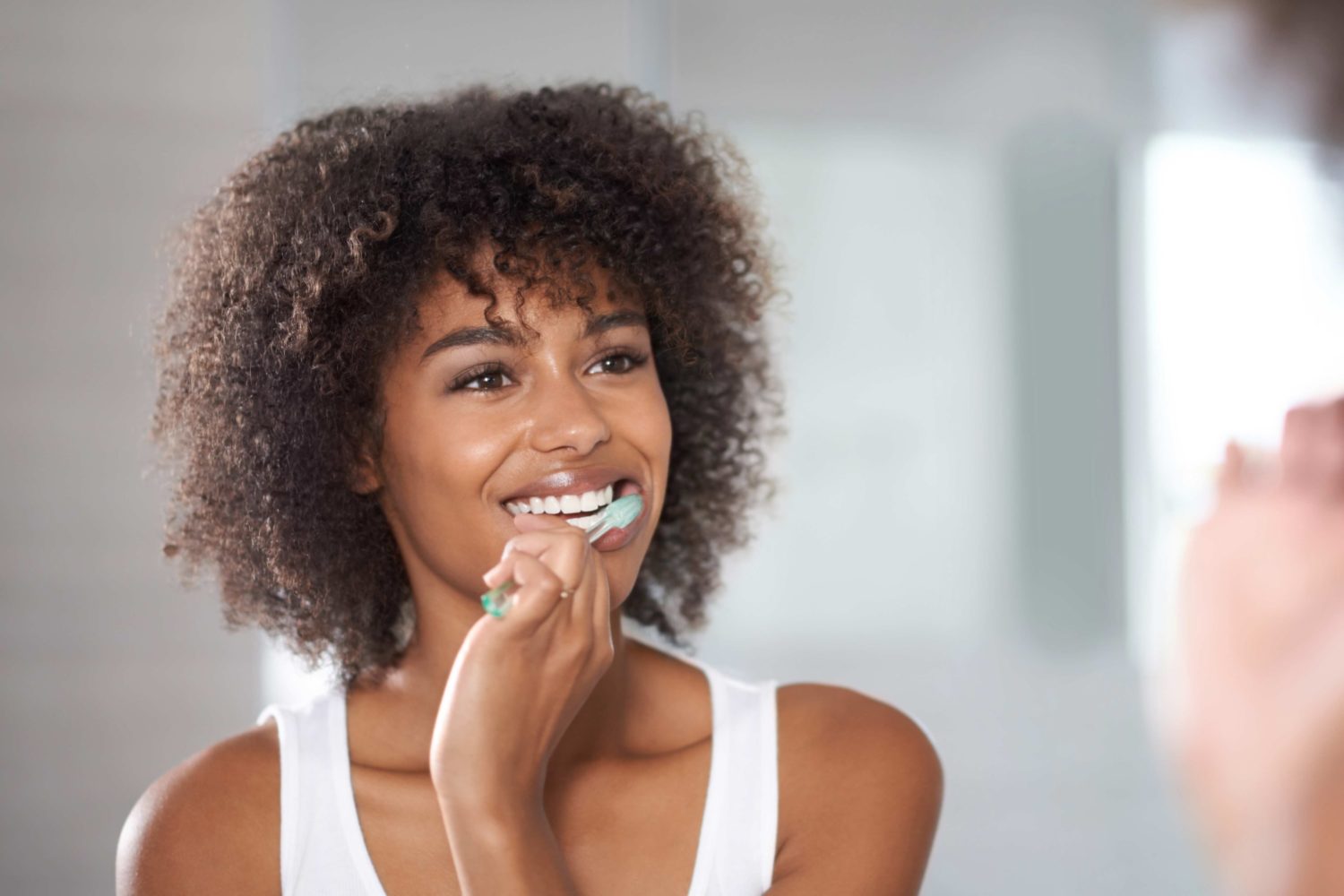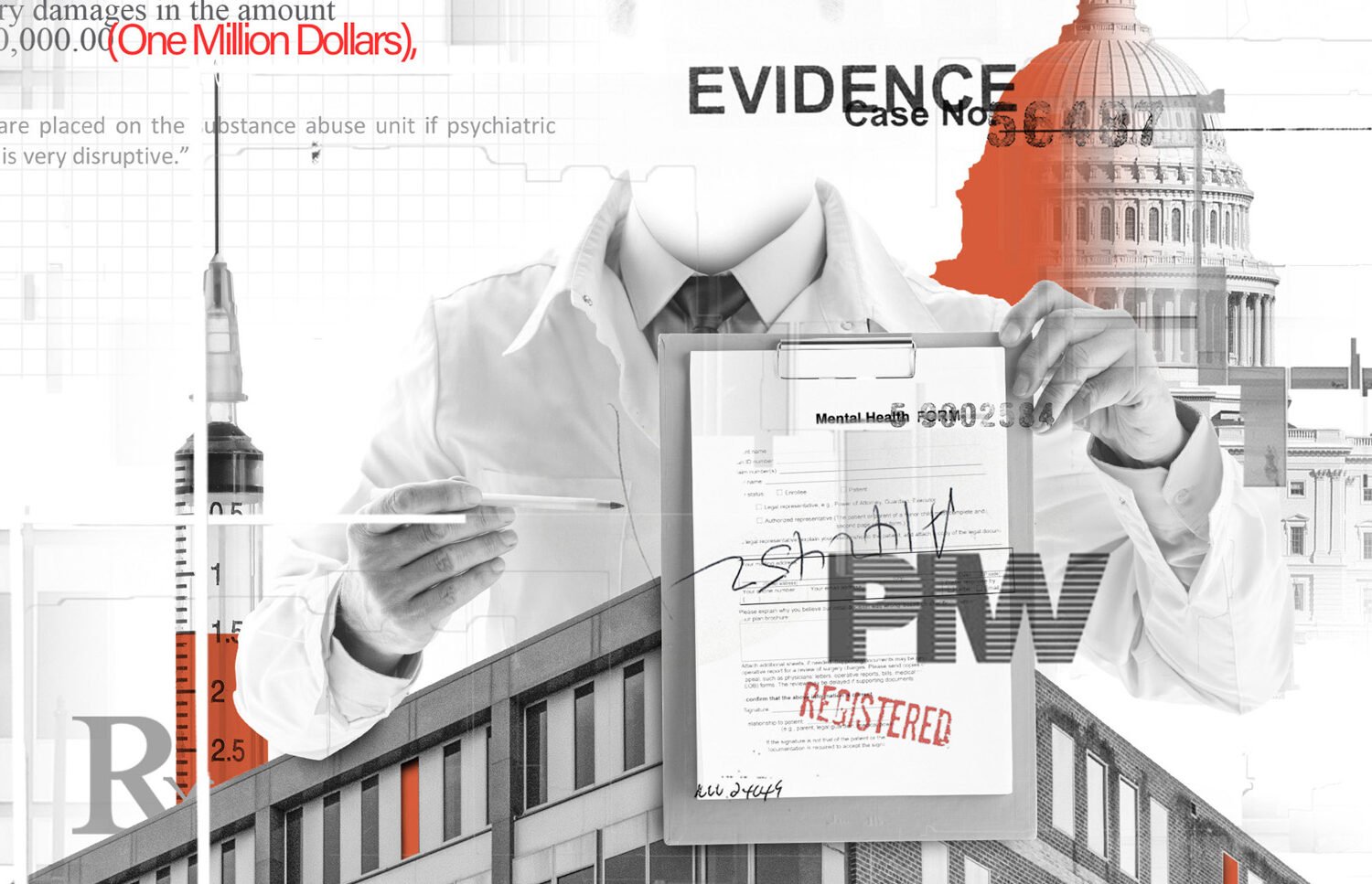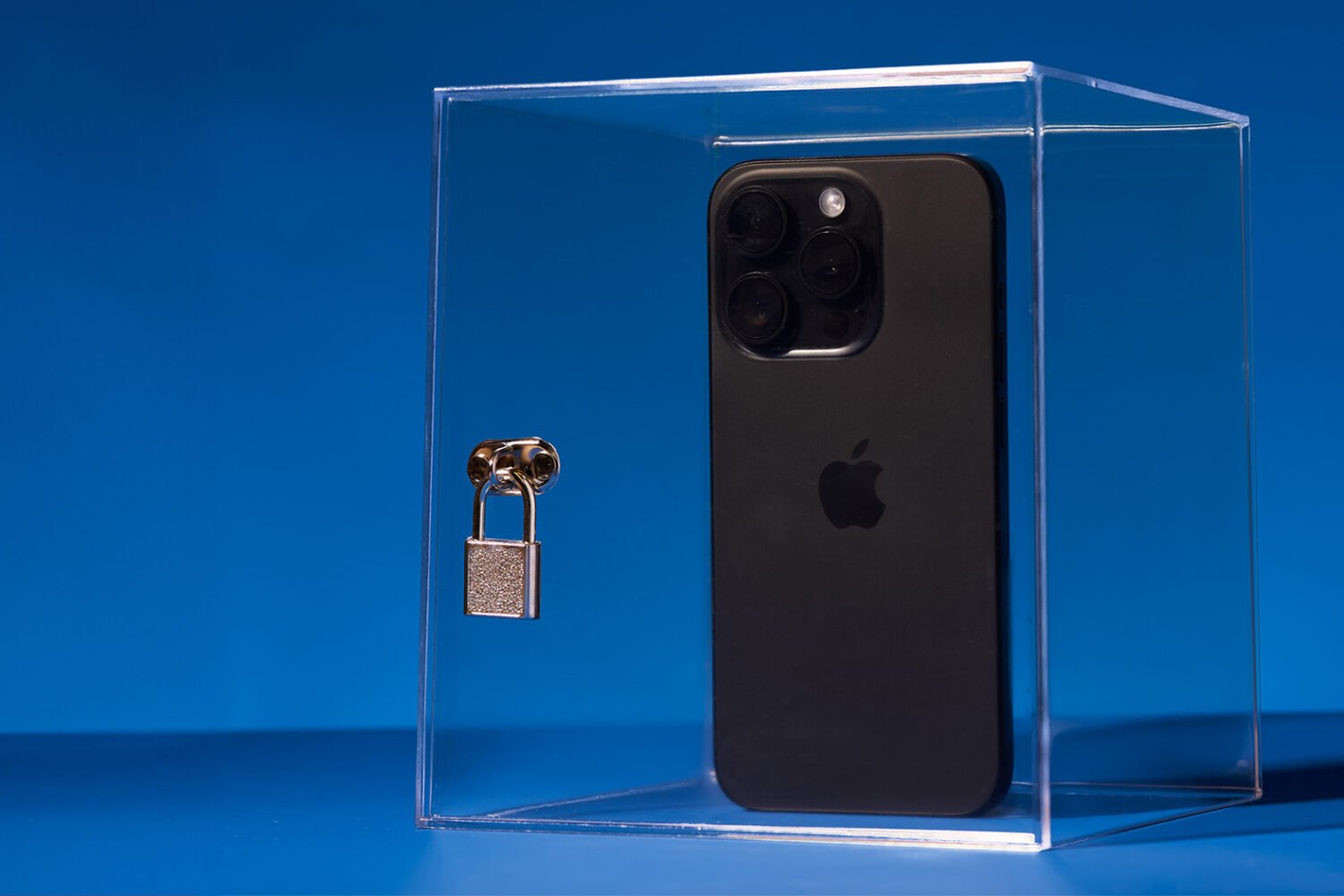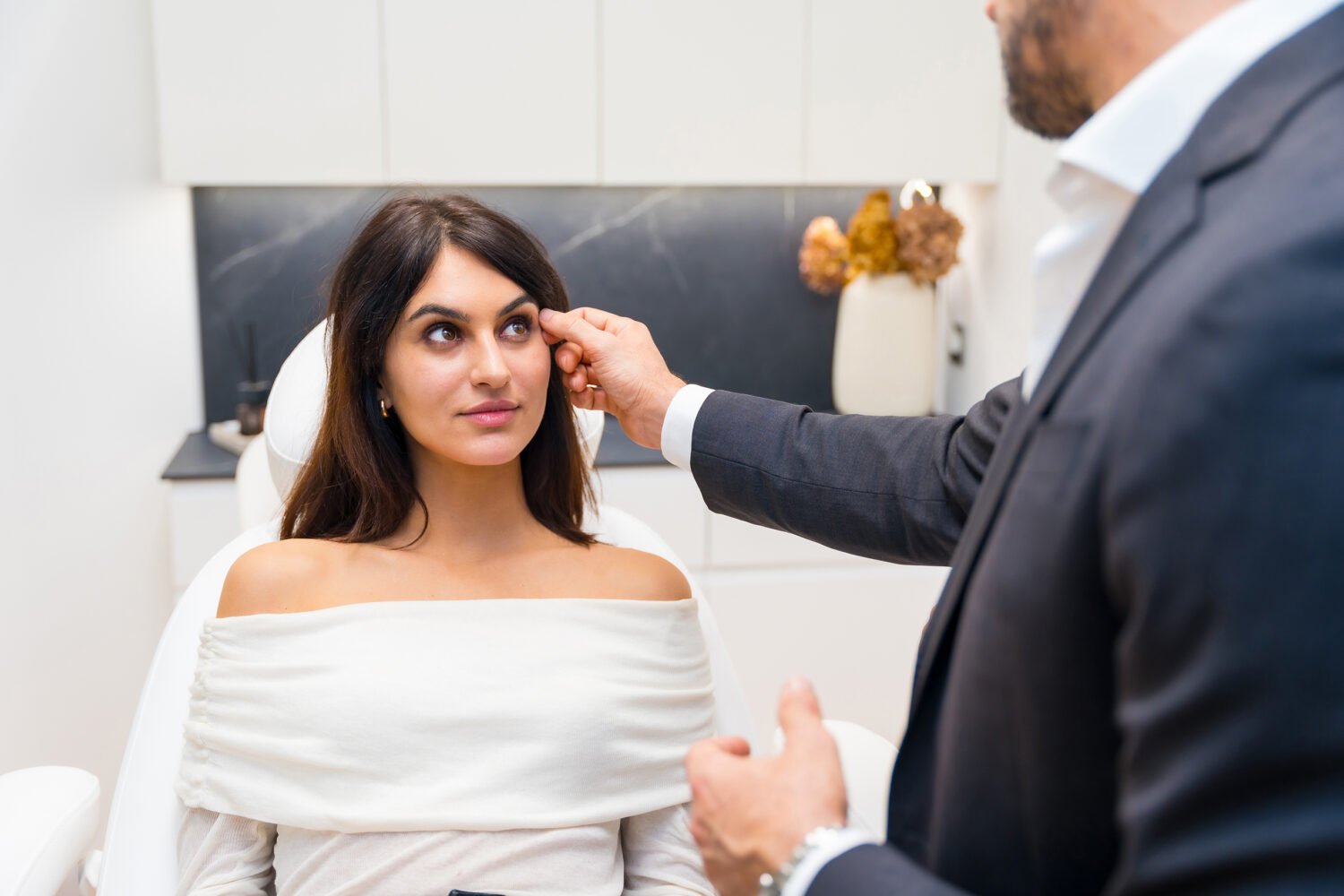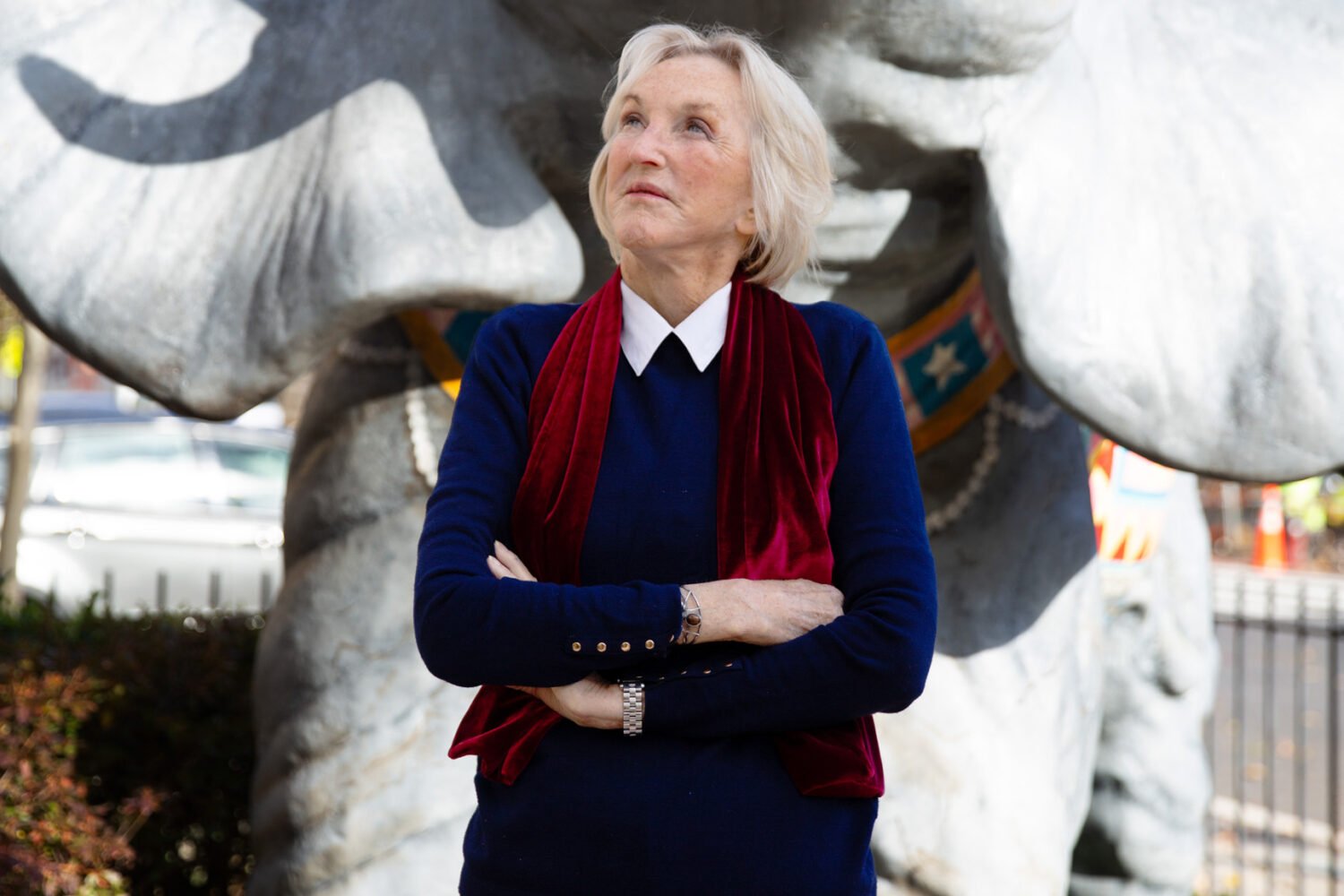When I was about 12, a dentist told my parents I needed braces. My teeth were too crowded in my tiny mouth and crooked in spots. My parents, who afforded me a remarkable amount of autonomy, let me choose whether to get that mouthful of metal. You can guess what happened. Or, I should say, didn’t.
Many years later, as my teeth continued to shift, I’d notice when someone else had a perfect smile. I grew a bit self-conscious about mine. My teeth didn’t look so terrible that I refused to smile, but I did regret not getting braces.
Straighter teeth, I learned the hard way, weren’t just nice to look at. As a few dentists had warned me in adulthood, crowded teeth were harder to clean between—that and my crossbite were causing gum recession. The crossbite also was putting pressure on some teeth. Last year, I cracked a bicuspid—and was told that could keep happening.
Which led me to orthodontist Jill Bruno’s office in Friendship Heights, to get fitted with Invisalign trays that would gradually unsnarl my smile.
I had done my research, or so I thought, about how my life would change during the 15 months or so I’d be wearing the removable plastic aligners. Still, there have been surprises, both pleasant and not.
After eight months so far with Invisalign, here’s what I wish I’d known—or fully appreciated—before starting.
1. You might talk with a lisp, but others won’t notice. That’s not all they won’t detect.
The appeal of Invisalign is in the name—the clear trays are meant to be invisible. I personally think they’re obvious, but when I got together with a friend I hadn’t seen since pre-Invisalign, she didn’t notice the trays. She also didn’t hear what I hear: a slight lisp. When you first sheath your teeth in plastic, you might lisp at the beginning. Although I’ve gotten used to the trays—I often forget I’m wearing them—I still perceive a faint slur when I open my mouth. My husband reassures me it’s barely there.
“I do think what your husband said is true,” says Bruno. “To your ear, it may sound different, but other people may not notice.”
2. You’ll think twice about snacking, or lingering over a cup of tea. And you’ll brush and floss a lot. A lot.
I knew going in that I’d have to take out the trays to eat. It’s nearly impossible to chew when they blunt the edges of the teeth. The one time I tried eating a grape with the trays in, I felt like I was gumming it.
But I didn’t fully appreciate how inconvenient it would be to take them out to drink just about anything except water. Hot liquids can damage the trays; beverages like coffee can stain them.
Ideally, you’re meant to wear them 22 hours a day. That’s hard if you’re taking the trays out not just to eat but also to drink.
I like to start many mornings sipping coffee or tea while playing Wordle and Spelling Bee, then have breakfast. That alone can eat up 90 minutes. Add in the time it takes for lunch and dinner plus any snacks, and I almost never hit 22 hours.
If my day includes an after-work cocktail reception, a dinner party, or any public speaking (where I worry about lisping), I’m lucky to wear the trays for 18 hours.
Then there’s snacking. I began to weigh my hunger and cravings against the hassle of having a midafternoon cookie or handful of nuts, after which I’d have to brush. Dentists suggest that anyone brush and floss after eating; with Invisalign, you don’t want residue trapped under the trays to cause decay. Occasionally, I decide a snack isn’t worth it and just drink a glass of water. (On the plus side, I am drinking more water.)
Or I skip brushing after some snacks. I might leave my trays in while I sip an iced coffee or smoothie or white wine, especially if it’s almost time to move on to the next set of trays to keep my teeth moving and I’ll be tossing the ones I’m wearing.
“Once in a while, eating with them, drinking with them, it’s not going to change your progress or cause harm,” Bruno assured me. She also understands that 22 hours is tough, and told me to do my best.
“The best, most predictable wear pattern is 22 hours,” she says. “I also tell my patients there is freedom in the framework. You can wear it periodically less than that and we can still get the result.”
3. If your dentist offers at-home dental monitoring, do it–but be prepared for some frustration.
When I picked up my trays, I also got a device called a ScanBox, which attaches to your smartphone and, with the help of an app, uses the camera to take images of your teeth that are then sent to the dentist.
“Most offices don’t offer the dental monitoring,” says Zach Casagrande, whose practice, Northern Virginia Orthodontics, also does. “Then you have to go to the office more often, which most people don’t want to do.”
ScanBox offers two settings—one, probably a hit with kids, is like a video game, in which you “capture” dots as you scan your mouth from side to side and up and down. It was fun, but it was glitchy and there were two dots—on the far right side of my mouth and on my top arch—that I had trouble “capturing,” and the robotic voice kept urging me to “open wider” (remember: small mouth), until I wanted to fling my phone across the bathroom.
I eventually discovered a lower-key mode—no cartoon graphics—that’s simpler for me to use. But that didn’t end the frustration.
Hours after submitting a scan, I get a message from the dentist, generated with the help of AI. Two-thirds of the time, it’s encouraging: “You are doing well—so well that it’s time to move to your next set of aligners!” But a third of the time, the note is disappointing: “Sometimes teeth are stubborn, and aligners need a little more time. It’s all good. Keep wearing this set.” Usually, for me, that means another three days.
When I started Invisalign in late October, I was given 30 trays and told I’d move on every two weeks. I did the math: 60 weeks. Just over a year. I could do that. But because I’ve struggled to wear them for 22 hours, the first 15 trays have taken 34 weeks. The extra days add up. (While I change trays about every two weeks, some patients move on quicker.)
Forgoing my leisurely morning coffee could speed things along, but it’s one of my daily pleasures. It’s a choice.
4. You may not need the attachments on your teeth.
Another choice: I haven’t had the attachments glued to my teeth. These are tiny bumps of composite resin that secure the trays and help push and pull teeth into a more predictable result.
During my initial visit, I found the trays painfully tight and had trouble prying them off as well as snapping them in. (Each new set is snug when you first switch, but they loosen as teeth move.) When I was told the aligners would be even harder to get on and off once the attachments were affixed to almost a dozen of my teeth, I panicked.
Bruno told me that with adults she sometimes skips the attachments, at least at the beginning. Subsequent visits found my teeth moving nicely, so she said I still could do without. A colleague had told me that removing the attachments had damaged two of her teeth, so I was fine with not getting them—though I may need them later for stubborn teeth.
“Every patient is different, but there are ways to move teeth without attachments,” Casagrande says. “We minimize attachments because I want my patients to have a great experience.”
5. You’ll probably hate the hassle. Until you start to see results.
The lisp. The inconvenience. Then there’s the cost—I paid about $6,000 for Invisalign, and that doesn’t count the gum graft I needed before treatment could begin, or the bonding or veneers I’ll need after to fill in a few gaps and hide the chips my bad bite created on the tips of some incisors.
Around tray 12, I was cleaning between my teeth with an interdental brush when I realized for the first time that I could slip the device between all of my lower front teeth. Before, they’d been so crowded, it never went through. I stopped and studied my teeth in the mirror. My husband had been insisting for weeks that they looked straighter, but I thought he was just being nice—how could they when I was only about a third of the way through? Dr. Bruno had said I’d really notice a difference around tray 20, but my teeth already looked straighter—an impression confirmed by a video on my phone app.
“It is hard as an adult to do this,” Bruno says. “It’s like watching paint dry. But for patients to be able to see the video and see the progress, it makes such a difference.”
I’d reluctantly invested in Invisalign for the health of my teeth and gums—I tried not to get my hopes up about the aesthetics. But once I saw how much better my teeth were looking, I was all in. I even started being more disciplined about the hours I wore them. Halfway through, the whole process is already worth it.
Top Orthodontists
This list of orthodontists, which first appeared in the March 2025 issue, was generated by sending a survey to every local dentist and asking them to rate their peers. The orthodontists below were judged to have the best skill, knowledge, results, and demeanor with patients.
Curtis L. Abigail
Arlington, Bethesda
571-388-3079
Ronald Ackerman
Waldorf
301-645-8222
Ibrahim Y. Alhussain
Vienna
703-952-7203
Rana Barakat
Sterling
703-433-9330
Elvi M. Barcoma
Ashburn, McLean, Reston, Gainesville
703-935-4837
Gregory D. Bath
Vienna, Great Falls
703-938-4614
Scott C. Berman
Falls Church, Herndon
703-241-9191
Michael S. Blackwood
Northwest DC
202-333-2200
Ignacio Blasi Jr.
Lorton
571-556-1884
Atefeh Boroun
Rockville
301-424-0136
Jill Bruno
Chevy Chase
301-656-3310
Zachary Casagrande
Ashburn, Gainesville
703-935-4837
Ann-Colter Cheron
Centreville
703-818-8860
Robin Choi
Bethesda
240-233-6887
Katie Clark
Tenleytown
202-686-2108
William E. Crutchfield
Chantilly
703-263-0575
Lisa A. DeMarco
Silver Spring
301-593-6363
Garret Djeu
Fairfax
703-691-8388
D. Michael Ellis
Annandale, Burke, Lorton, Fairfax
703-750-9393
Joseph S. Errera
Warrenton, Middleburg, Culpeper
540-347-1888
Frederick S. Fritz
Rockville
301-330-9550
Allen S. Garai
Vienna, Great Falls
703-281-4868
Eduardo J. Gerlein
Chevy Chase
301-951-4114
Ashkan Ghaffari
Vienna
703-281-0466
Ali Y. Ghatri
Fairfax, Herndon, Reston
703-782-8704
Madeleine Goodman
Bethesda
301-867-7584
Alfred C. Griffin Jr.
Warrenton, Middleburg, Culpeper
540-347-1888
Thomas M. Grisius
Purcellville
540-338-8125
Gordon S. Groisser
Gaithersburg, Clarksburg, Hagerstown
240-252-5294
Linda A. Hallman
Chevy Chase
301-781-7745
Alan R. Heller
Bethesda, Laurel
301-654-5433
Roger A. Hennigh
Woodbridge, Burke
703-640-1000
Jean Hong
Silver Spring, Olney
301-236-0600
David R. Hughes
West Springfield
703-451-0502
Herbert M. Hughes
Alexandria
703-360-8660
Justin M. Hughes
Alexandria
703-360-8660
Navin Hukmani
Leesburg, South Riding
703-858-3600
Darin B. Iverson
Arlington
703-536-7846
Timothy Johnson
Rockville
301-881-6170
Elizabeth M. Jones
Falls Church
703-573-0200
Mary A. Karau
Alexandria
703-765-5505
Christine M. Kim
Reston
703-939-8000
Rodney J. Klima
Burke
703-425-5125
Bob B. Kumra
Downtown DC, Stafford
202-785-8672
Donald F. Larson
Alexandria
703-838-8998
Edwin Lee
Rockville, Olney
240-252-5293
William S. Lee
Alexandria
703-347-9876
Christopher G. Liang
Potomac, Friendship Heights
301-983-3132
H. Quoc Lu
Alexandria
703-822-0010
Crissy Markova
Arlington
703-774-3070
Robert B. Marzban
McLean
703-686-8285
Deirdre J. Maull
McLean
703-556-9400
Lara D. Minahan
Olney
301-260-2030
Kelly E. Morgan
Leesburg, Winchester
703-723-5900
S. Russell Mullen
Leesburg
703-771-9887
Chelsea Murphy
Friendship Heights
202-968-1144
Jina Naghdi
Herndon
703-471-8333
Denise T. Nguyen
Alexandria
571-427-4911
Dror Orbach
Downtown DC, Falls Church
202-875-6407
David Rad
Potomac, College Park, Bethesda, North Bethesda
301-235-1125
Mehdy Rad
Potomac, College Park, Bethesda, North Bethesda
301-299-3993
Danielle E. Robb
Reston, Ashburn, and Arlington
703-935-4837
Negaar Sagafi
Spring Valley, Bethesda
202-644-9469
Viney P. Saini
Clarksburg, Frederick
240-801-7464
Andrew L. Schwartz
Downtown DC, Rockville
202-525-6952
Stuart A. Scott
Silver Spring, Mitchellville
301-804-6687
John C. Shefferman
Downtown DC
202-338-7128
Debra Shin
Rockville, Potomac
301-770-7770
Richard Shin
Rockville, Potomac
301-770-7770
Dalia Shlash
Olney
301-924-2405
Patrice Smith
Downtown DC
202-223-2000
Christine Stang
Reston
571-548-3239
Sonia Talley
Tenleytown
202-686-2108
Hani Thariani
Arlington, Herndon
571-260-0122
Stephen P. Tigani
Tenleytown, Poolesville, Burtonsville
202-362-0072
Nancy C. Tilkin
Silver Spring
301-593-6363
Stephan Tisseront
Reston
571-458-1168
Chris E. Tsintolas
Gaithersburg
301-948-7513
Courtney J. Ullrich
Ashburn
703-278-3297
Robert Yu
Gaithersburg
301-948-7660
This article appears in the August 2025 issue of Washingtonian.

